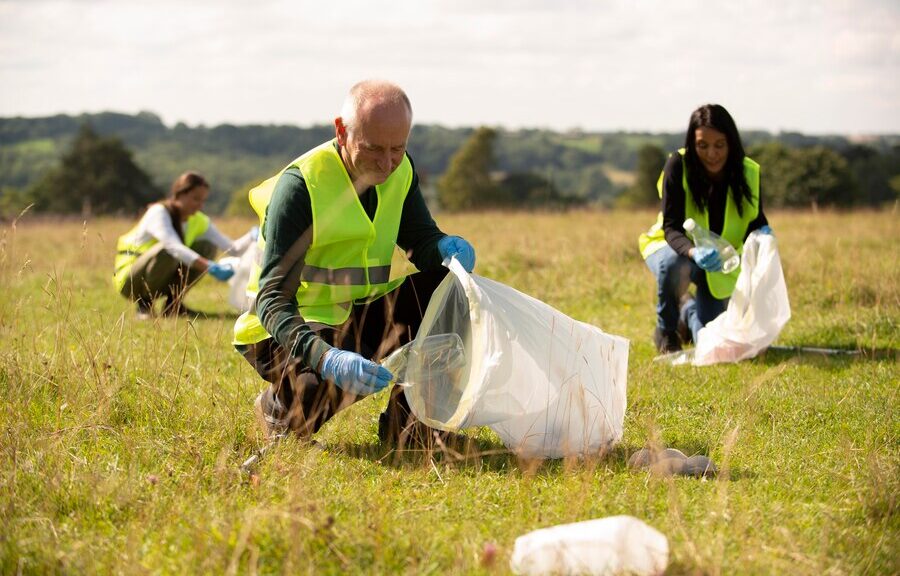In a world where sustainability is becoming increasingly imperative, every aspect of our daily lives, including junk removal, is being reimagined through an eco-friendly lens. Welcome to “The Ins and Outs of Eco-Friendly Junk Removal,” where we delve into the innovative strategies and practices that are reshaping the way we dispose of unwanted items while minimizing our environmental footprint. This comprehensive guide will explore the various methods, technologies, and philosophies behind eco-friendly junk removal services. From recycling and upcycling to donation and responsible disposal, we’ll uncover the diverse approaches aimed at reducing waste and preserving our planet for future generations. Whether you’re a homeowner decluttering your space, a business seeking sustainable waste management solutions, or simply an eco-conscious individual interested in making a positive impact, this blog is your go-to resource for understanding the principles and benefits of eco-friendly junk removal. Join us as we embark on a journey towards a cleaner, greener future—one junk pile at a time.
The Environmental Impact of Traditional Junk Removal Methods

Traditional junk removal methods have long been the go-to solution for clearing out unwanted items from homes, businesses, and construction sites. However, these methods often come with a hidden cost to the environment. From contributing to pollution to degrading ecosystems, the environmental impact of traditional junk removal practices cannot be ignored. In this article, we’ll delve into the various ways in which traditional methods harm the environment and why it’s crucial to transition towards more sustainable alternatives.
Landfill Overflow
One of the most significant environmental impacts of traditional junk removal methods is the overflow of landfills. When items are simply discarded and sent to landfills, they take up valuable space and contribute to the accumulation of waste. As landfills reach capacity, they emit harmful greenhouse gasses like methane, which contribute to climate change. Additionally, leachate from landfills can contaminate soil and water sources, posing serious health risks to both humans and wildlife.
Air Pollution
Many traditional junk removal practices involve burning waste, either openly or in incinerators. This releases harmful pollutants and toxins into the air, including carbon dioxide, sulfur dioxide, and particulate matter. These pollutants can worsen air quality and contribute to respiratory problems, cardiovascular disease, and other health issues in nearby communities. Moreover, burning certain materials can release hazardous chemicals that persist in the environment and accumulate in the food chain.
Habitat Destruction
Illegal dumping, a common practice in traditional junk removal, can lead to habitat destruction and wildlife displacement. When waste is dumped in natural areas such as forests, wetlands, or rivers, it can disrupt ecosystems, destroy habitats, and harm native species. Plastic pollution, in particular, poses a significant threat to marine life, as it can entangle marine animals and be ingested, leading to injury or death.
Soil Contamination
Certain materials found in household and industrial waste, such as heavy metals, chemicals, and pesticides, can leach into the soil and contaminate it. This contamination can have far-reaching consequences, affecting soil fertility, groundwater quality, and the health of plants, animals, and humans. In agricultural areas, soil contamination can reduce crop yields and pose risks to food safety.
Water Pollution
Improper disposal of hazardous waste and chemicals can result in water pollution, which has detrimental effects on aquatic ecosystems and human health. When rainwater washes over landfills or illegal dumpsites, it can pick up pollutants and carry them into rivers, lakes, and oceans. This pollution can harm aquatic life, disrupt ecosystems, and contaminate drinking water sources, posing serious risks to public health.
Why Eco-Friendly Junk Removal Matters More Than Ever

In today’s world, the need for eco-friendly practices has never been more urgent. As we face escalating environmental challenges such as climate change, pollution, and resource depletion, it’s essential to rethink the way we handle waste. Eco-friendly junk removal offers a sustainable alternative to traditional methods, minimizing environmental impact and promoting a healthier planet. In this article, we’ll explore why eco-friendly junk removal matters now more than ever and the benefits it brings to both the environment and society.
Mitigating Climate Change
Eco-friendly junk removal plays a crucial role in mitigating climate change by reducing greenhouse gas emissions. Traditional methods such as landfilling and incineration release significant amounts of methane and carbon dioxide into the atmosphere, contributing to global warming. In contrast, eco-friendly practices such as recycling, composting, and repurposing help minimize emissions by diverting waste from landfills and reducing the need for energy-intensive manufacturing processes.
Preserving Natural Resources
By embracing eco-friendly junk removal, we can conserve valuable natural resources and reduce our reliance on raw materials. Many items that end up in landfills or incinerators, such as metals, plastics, and paper, can be recycled or repurposed into new products. By recovering and reusing these materials, we can reduce the strain on ecosystems and minimize the environmental impact of resource extraction and production.
Protecting Ecosystems
Traditional junk removal methods often result in habitat destruction and environmental degradation. Illegal dumping and landfilling can contaminate soil, water, and air, harming ecosystems and endangering wildlife. Eco-friendly junk removal practices prioritize the protection of natural habitats by minimizing pollution, conserving resources, and promoting responsible waste management. By preserving ecosystems, we ensure the health and vitality of our planet for future generations.
Promoting Public Health
Eco-friendly junk removal has significant benefits for public health and well-being. Traditional disposal methods, such as burning waste, can release harmful pollutants into the air and water, posing serious risks to human health. By adopting eco-friendly practices that minimize pollution and exposure to toxins, we can reduce the incidence of respiratory illnesses, cardiovascular diseases, and other health problems associated with environmental contamination.
Fostering Sustainable Communities
Eco-friendly junk removal fosters the development of sustainable communities by promoting local economies, creating green jobs, and empowering residents to take collective action against waste pollution. Recycling programs, community composting initiatives, and waste reduction campaigns not only help divert waste from landfills but also strengthen social cohesion and resilience. By working together to implement eco-friendly practices, communities can build a more sustainable and equitable future for all.
The Role of Technology in Advancing Eco-Friendly Junk Removal
Technology is revolutionizing the way we approach junk removal, offering innovative solutions to minimize environmental impact and promote sustainability. From advanced recycling systems to smart waste management technologies, the role of technology in eco-friendly junk removal is more crucial than ever.
- Advanced Sorting Systems: Technology enables precise sorting of recyclable materials, allowing for more efficient separation and processing of waste streams. Automated sorting systems use sensors and robotics to identify and sort materials, reducing contamination and maximizing recycling rates.
- Waste-to-Energy Technologies: Advanced waste-to-energy technologies convert organic waste into renewable energy sources such as biogas and biofuels. Anaerobic digestion and thermal depolymerization are examples of processes that harness technology to generate clean energy from waste, reducing reliance on fossil fuels and mitigating greenhouse gas emissions.
- Data Analytics and Optimization: Smart waste management systems utilize data analytics and optimization algorithms to optimize collection routes, reduce fuel consumption, and minimize environmental impact. By leveraging real-time data and predictive analytics, waste management companies can streamline operations and improve efficiency.
- Mobile Apps and Platforms: Mobile apps and online platforms facilitate communication between waste service providers and customers, making it easier to schedule pickups, track recycling progress, and access educational resources. These digital tools empower individuals and businesses to make informed decisions and participate in eco-friendly waste management practices.
Conclusion
“The Ins and Outs of Eco-Friendly Junk Removal” underscores the growing importance of sustainable practices in the junk removal industry, exemplified by businesses like Surrey Junk Removal Guy. By providing their phone number (604) 900-3672 and serving the Surrey area in British Columbia, Canada, they demonstrate a commitment to both effective service and environmental responsibility. In an era where environmental consciousness is paramount, initiatives such as eco-friendly junk removal not only contribute to cleaner communities but also set a standard for businesses aiming to prioritize sustainability while meeting customer needs.

